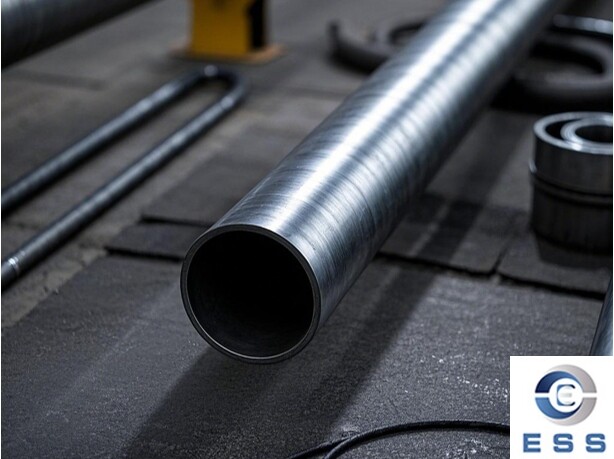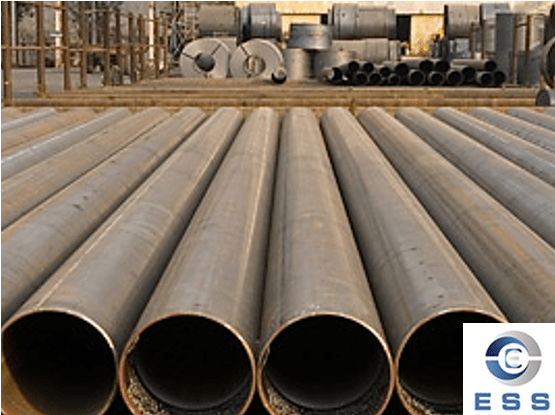
Mild
steel tube is a carbon
steel pipe with low carbon content. Mild steel tube is widely used in many
fields due to its good strength and toughness. However, its surface is
susceptible to corrosion and wear, which affects its performance and service
life. Therefore, it is particularly important to surface treat mild steel tube.
So what are the surface treatment methods of mild steel tube?
Galvanizing treatment
1. Hot dip galvanizing
Hot dip galvanizing is to immerse the mild
steel tube in high temperature zinc liquid to form a layer of zinc-iron alloy
layer and pure zinc layer on its surface. The thickness of the hot dip
galvanizing layer is usually between 60-100μm and has
good corrosion resistance. In outdoor environments, such as building
structures, bridges and power towers, hot dip galvanized
steel pipes can effectively resist the influence of rain, humid air and
other corrosive substances. Its strong corrosion resistance can greatly extend
the service life of the steel pipe, generally up to 15-20 years.
The hot dip galvanizing process is
relatively simple and low cost. During the hot-dip galvanizing process, the
zinc layer on the surface of the steel pipe will react with the iron matrix to
form a strong alloy layer, which improves the corrosion resistance and
mechanical properties of the steel pipe. In addition, the hot-dip galvanized
layer has good adhesion and stability and is not easy to fall off.
2. Electrogalvanizing
Electrogalvanizing is the process of
depositing zinc on the surface of mild steel tubes using the principle of
electrolysis. The thickness of the electrogalvanized layer is relatively thin,
generally between 5-15μm. Compared with hot-dip
galvanizing, the surface of the electrogalvanized layer is smooth, uniform, and
has good appearance quality. This method is suitable for occasions with high
requirements for appearance, such as interior decoration, furniture, and
electronic equipment.
The advantage of electrogalvanizing is that
it accurately controls the thickness and quality of the zinc layer and can meet
different application requirements. At the same time, the electrogalvanizing
process is environmentally friendly and does not produce a large amount of
pollutants. However, the corrosion resistance of the electrogalvanized layer is
relatively weak, and additional protective measures may be required in some
harsh environments.
Painting treatment
1. Ordinary paint coating
Ordinary paint coating is a common surface
treatment method. Commonly used paints include alkyd paint, epoxy paint, etc.
Before painting, the surface of the steel pipe needs to be pretreated, such as
rust removal, oil removal, etc. The thickness of the paint is generally between
20-50μm, and the specific thickness depends on the use
environment and requirements.
Ordinary paint coating has good decorative
properties and certain anti-corrosion properties. It can provide different
colors and glosses for steel pipes to meet various decorative needs. In
addition, paint can also protect the surface of steel pipes from corrosion and
wear to a certain extent. In some building structures, industrial equipment and
furniture, ordinary paint coating is widely used for surface treatment of steel
pipes.
2. Powder coating coating
Powder coating coating is to adsorb powder
coating on the surface of steel pipes by electrostatic spraying and other
methods, and then form a coating after high temperature curing. The thickness
of powder coating is generally between 60-100μm, with
good corrosion resistance, wear resistance and decorative properties.
The advantage of powder coating coating is
that its coating thickness is uniform and the quality is stable. It can form a
solid protective film on the surface of steel pipes, effectively preventing
corrosion and wear. In addition, the colors of powder coating are diverse and
can be selected according to different needs. In some occasions where high
surface quality is required, such as automotive parts, home appliances and
industrial equipment, powder coating has been widely used.
Other surface treatment methods
In addition to the above-mentioned
galvanizing and painting treatments, there are some other surface treatment
methods, such as passivation treatment, phosphating treatment, etc. These
methods can further improve the surface performance and corrosion resistance of
mild steel tubes.
Passivation treatment is to form a
passivation film on the surface of the steel pipe, so that the surface of the
steel pipe has good corrosion resistance. Phosphating treatment is to form a
phosphating film on the surface of the steel pipe through chemical reaction to
improve the corrosion resistance and adhesion of the steel pipe. These methods
play an important role in some specific fields and applications.
Conclusion
Surface treatment of mild steel tubes is an
important means to improve their performance and service life. Different
surface treatment methods have their own characteristics and scope of
application. Galvanizing, painting and other surface treatment methods can
effectively improve the surface performance of steel pipes and meet different
application requirements. In practical applications, the appropriate surface
treatment method should be selected according to the specific situation to
ensure the quality and performance of the steel pipe.













 Eastern Steel Manufacturing Co.,Ltd not only improve product production and sales services, but also provide additional value-added services. As long as you need, we can complete your specific needs together.
Eastern Steel Manufacturing Co.,Ltd not only improve product production and sales services, but also provide additional value-added services. As long as you need, we can complete your specific needs together.










